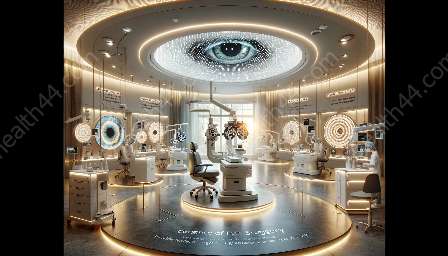Glaucoma is a leading cause of irreversible blindness worldwide, affecting millions of people. While medications and laser therapies are the primary treatments for glaucoma, surgery becomes necessary in advanced cases or when other treatments are ineffective. This comprehensive guide explores the different types of glaucoma surgery, surgical techniques, and their role in vision care.
Understanding Glaucoma
Glaucoma is a group of eye diseases that progressively damage the optic nerve, often due to elevated intraocular pressure. It is a complex condition, and the treatment approach varies based on the stage and severity of the disease. In many cases, surgical intervention is required to manage glaucoma effectively.
The Role of Surgery in Glaucoma Management
Glaucoma surgery aims to lower intraocular pressure (IOP), the primary risk factor for optic nerve damage and vision loss. By reducing IOP, the progression of glaucoma can be slowed, and further damage to the optic nerve can be minimized. Surgical intervention is considered when medication and laser therapy fail to achieve the desired IOP reduction, or when the disease has advanced to a stage where surgery is the most viable treatment option.
Types of Glaucoma Surgery
There are several types of glaucoma surgery, each with its unique approach and benefits. The most common types include:
- Trabeculectomy: This involves creating a new drainage channel for fluid to leave the eye, reducing intraocular pressure.
- Glaucoma Drainage Devices: These are small implants that help in draining fluid from the eye to reduce IOP.
- Minimally Invasive Glaucoma Surgery (MIGS): MIGS procedures involve tiny stents or devices to improve the natural drainage of fluid within the eye, leading to reduced IOP.
- Cyclophotocoagulation: This laser treatment targets the ciliary body to decrease fluid production within the eye, lowering the intraocular pressure.
Gaining a Deeper Insight into Surgical Techniques
Advancements in surgical techniques have revolutionized the field of glaucoma surgery. Modern approaches focus on minimizing trauma, reducing complications, and enhancing patient outcomes. Some notable surgical techniques and advancements include:
- Micro-Invasive Glaucoma Surgery (MIGS): MIGS procedures have gained popularity due to their minimally invasive nature and reduced risk of complications. They are often performed in conjunction with cataract surgery, offering a dual benefit to patients with both conditions.
- Endoscopic Cyclophotocoagulation (ECP): This technique allows for direct visualization and treatment of the ciliary body using an endoscope, leading to precise and targeted therapy for lowering IOP.
- Transscleral Cyclophotocoagulation (TSCPC): TSCPC involves using a laser to treat the ciliary body through the sclera, offering an alternative approach for managing glaucoma with a reduced risk of complications.
- Novel Implantable Devices: Innovative devices such as the Xen Gel Stent and the InnFocus MicroShunt offer new avenues for surgical glaucoma management, providing safer and more effective options for patients.
Post-Surgery Vision Care and Rehabilitation
Following glaucoma surgery, diligent post-operative care and rehabilitation are essential to ensure optimal visual outcomes. Patients will require close monitoring to assess the success of the surgery and address any post-operative complications. Additionally, adherence to post-surgery medication regimens and lifestyle modifications are crucial for maintaining intraocular pressure within the desired range and preserving vision.
Empowering Patients through Knowledge
Understanding glaucoma surgery and the latest surgical techniques empowers patients to make informed decisions about their eye care. By staying informed about the available treatment options and advancements in glaucoma surgery, individuals can actively participate in their vision care and work closely with their ophthalmologists to achieve the best possible outcomes.


